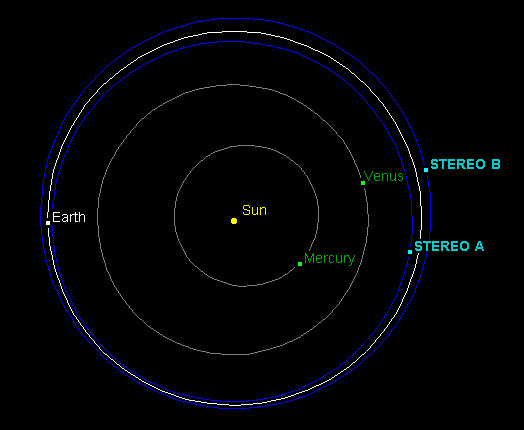NASA's Stereo A and B spacecraft circle the Sun in orbits very similar to Earth's. This plot shows their location on November 21, 2014. NASA / JPL Horizons
Despite rescue efforts, no one has heard from one of two NASA spacecraft on the far side of the Sun since October 1st.
Solar physicists always worry about the damage to Earth that might occur if the Sun were to unleash a titanic flare and zap our planet with a potent blast wave of energetic particles. So, during the past two decades, NASA has launched a series of spacecraft designed to keep tabs on the Sun and the “space weather” it creates.
Key to this plan is Stereo, the Solar Terrestrial Relations Observatory. Launched in 2006, Stereo A looped around the Moon and swung into a heliocentric orbit “ahead” of Earth, while Stereo B took up a solar orbit “behind” the Earth. They provide views of the Sun and its surroundings from angles we can’t see.
Both Stereo craft have drifted to the far side of the Sun, meaning that their dish-shaped radio antennas must point near the Sun to communicate with Earth. To protect these from overheating, mission controllers devised a plan to point each craft away from the Sun (and Earth) and to put it in safe-mode hibernation for about a year.
Tests of these new procedures took place over the past few months. Stereo A checked out fine and began its “time out” on August 20th. A month later engineers were completing Stereo B’s final tests, which involved commanding the craft to go into its safe mode and then resume normal operations.Then something went wrong.

